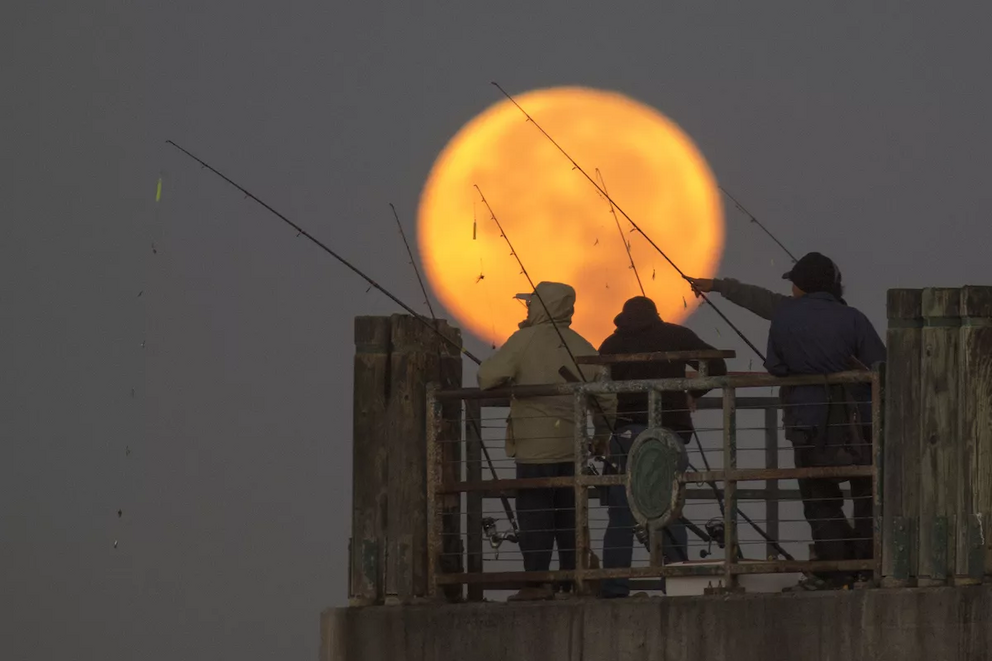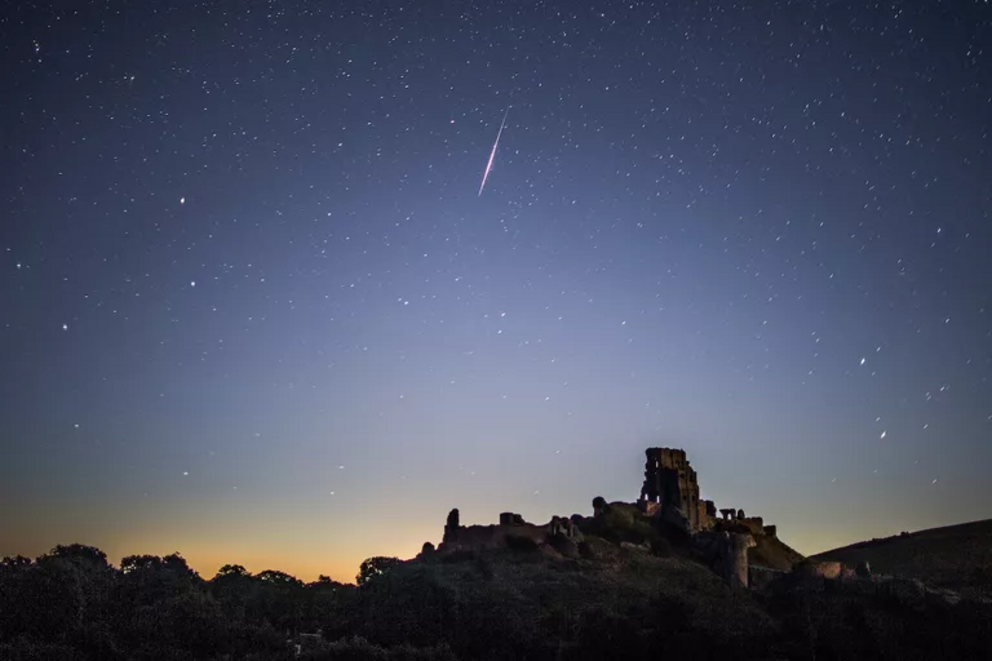What to see in the night sky for August 2021
The Perseids meteor shower occurs every year when the Earth passes through the cloud of debris left by Comet Swift-Tuttle, and appear to radiat.
Move over fireflies, there are some real celestial fireworks taking place this month.
Welcome to August, a month defined by loud cicadas, pool parties, humidity, and children fretting about the impending return to school. When it comes to celestial happenings, however, there's a decent list of distractions to pull you away from the fray and into the quiet beauty of gazing at the heavens. From a moonless evening of shooting stars to two planets showing off, August is one of the best summer months for hitting the backyard after sundown.
Wishing you clear skies!
Saturn reaches opposition and shines its brightest (Aug. 1, 2)
On Aug. 2 at about 2 a.m. EST, Saturn will be at its closest and brightest to Earth for the year. Called opposition, this annual celestial phenomenon occurs when Earth’s faster orbit places it directly between a planet and the sun. Even better, you’ll be able to pick out Saturn all night as it rises just after sunset in the east and sets in the west just after sunrise. To find it, first look for Jupiter (which at this time of year is the brightest object in the evening sky). Saturn will be to the right and slightly higher in the sky.
While opposition brings Saturn closest to Earth, it’s still a staggering 746 million miles away (compared to the 38 million miles that divided Earth and Mars during their last opposition in 2020). Nonetheless, Saturn is so large (roughly 764 Earths could fit inside) that you should be able to get a sense of its rings with just a pair of binoculars. A small telescope will help bring out the details and may even give you a glimpse of Titan—Saturn’s largest moon (and, at 3,200 miles in diameter, larger than the planet Mercury!).
Have cloudy skies on Aug. 2? No worries, Saturn will retain its opposition magic throughout the month.
New moon (Aug. 8)
August's new moon will give way to dark skies for several nights. These are the perfect opportunities to grab a blanket and head outside into the still-warm summer evenings to enjoy the heavens in all their glory. With the Perseid meteor shower peaking a few days later, this will also set up conditions nicely to enjoy a pre-show of shooting stars leading up to the main event.
Stare deep into the Milky Way’s galactic center (All month)
August is peak Milky Way season in the northern latitudes, providing not only comfortable temperatures from which to gaze into our galaxy’s shimmering core, but also great positioning in the night sky.
According to Forbes, the “Milky Way window” is when skies are free from bright moonlight, so between the Last Quarter Moon and a few days after the New Moon. By mid-August, the Milky Way will be visible by 10 p.m. and be directly overhead by midnight—perfect dark sky conditions for making this hazy band of stars pop.
Our dusty galactic core, only visible during the summer months, is located in the constellation Sagittarius. It lies about 26,000 light years away from Earth and contains a supermassive black hole some 4 million times the size of our sun. Surrounding it are 10 million stars, composed of mostly old red giants. The bands that emanate from the core (the Milky Way is a barred spiral galaxy) are estimated to contain an additional 100-400 billion stars.
Perseid meteor shower (Aug. 12, 13)
Regarded as one of the best celestial light shows of the year, the Perseid meteor shower occurs from July 17 to Aug. 24 and peaks on the evening of Aug. 12. May we recommend a camp-out viewing?
The shower, sometimes creating as many as 60 to 200 shooting stars per hour, is produced as Earth passes through debris left over from the orbit of Comet Swift-Tuttle. This 16-mile-wide periodic comet, which completes an orbit around the sun every 133 years, has been described as "the single most dangerous object known to humanity." This is because every instance of its return to the inner solar system brings it ever closer to the Earth-moon system. Though astronomers believe the comet bears no threat for at least the next 2,000 years, future impacts cannot be ruled out.
If the comet were to hit Earth, scientists believe Swift-Tuttle would be at least 300 times more powerful than the asteroid or comet that wiped out the dinosaurs. For now, you can take in the beauty of the debris from this harbinger of doom by looking north towards the constellation Perseus. Because the moon will be below the horizon for most of the evening, fainter meteors will likely be visible creating the best viewing conditions in years.
The rise of the full Sturgeon Moon (Aug. 22)

August's full moon, nicknamed the Sturgeon Moon, will peak for the U.S. Eastern Seaboard on the morning of Aug. 22 at 8:02 a.m.
The Sturgeon Moon gets its name from the species of fish native to both Europe and the Americas that are easily caught this time of year. Other nicknames include the Corn Moon, Fruit Moon, and Grain Moon. In countries experiencing winter, such as New Zealand, native Māori called this full moon "Here-turi-kōkā" or "the scorching effect of fire is seen on the knees of man." This reference is to warm fires that glow during the Southern Hemisphere's coldest month.
Jupiter reaches opposition and shines its brightest (Aug. 19, 20)
Hot on the heels of Saturn’s opposition earlier in the month, Earth will do a similar orbital dance with Jupiter on Aug. 19 and 20. For those on the U.S. east coast, Jupiter will reach opposition at approximately 8 p.m. EST, getting to within 373 million miles of Earth. Jupiter will be easy to spot, rising just after sunset in the east and shining 18 times brighter than its close neighbor Saturn. If you miss it, no worries—Jupiter will be just as close and bright nearly all of August and into September.
And maybe call this year a warm-up? Next year, Jupiter will be even closer (approx. 367 million miles from Earth) on Sept. 26, 2022. It won’t get that close again for the rest of the 21st century.
Just like Saturn, this gas behemoth is best viewed using a small backyard telescope. According to the website CosmicPursuits.com, even the smallest telescope can pick out the structure of Jupiter’s colorful atmosphere.
Look for Earth's shadow (All year)
Ever wonder what causes the beautiful bands of color in the eastern sky at sunset or the western sky at sunrise? The dark blue band stretching 180 degrees along the horizon is actually the Earth's shadow emanating some 870,000 miles into space. The golden-red portion, nicknamed the "Belt of Venus," in Earth's upper atmosphere illuminated by the setting or rising sun.
Now that you know about this phenomenon, choose a night or morning sometime to try and pick it out. You'll need a western or eastern horizon that's fairly unobstructed to get a clear view of our planet's huge curved shadow.

